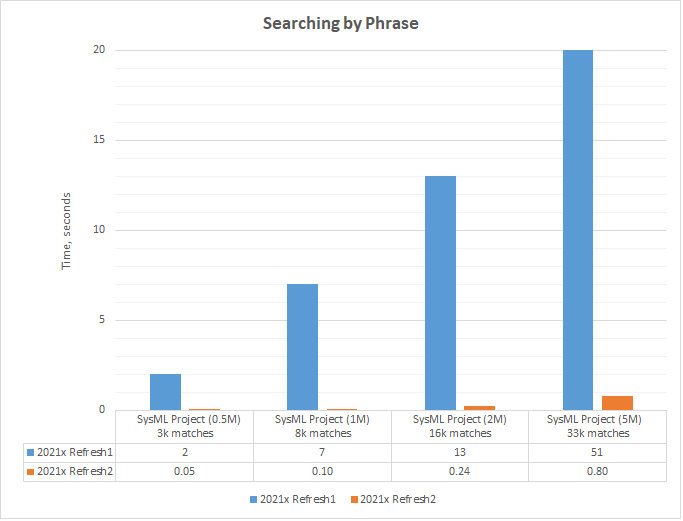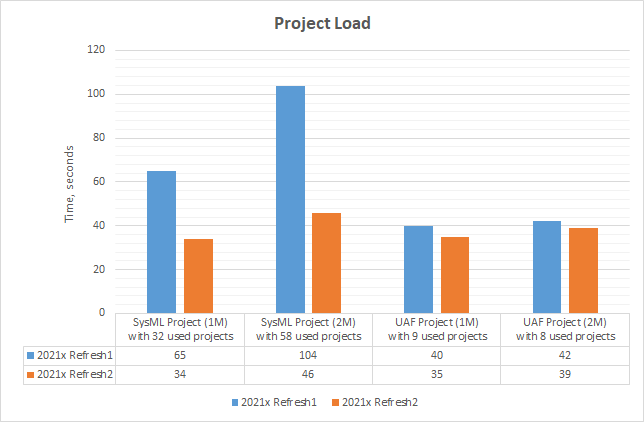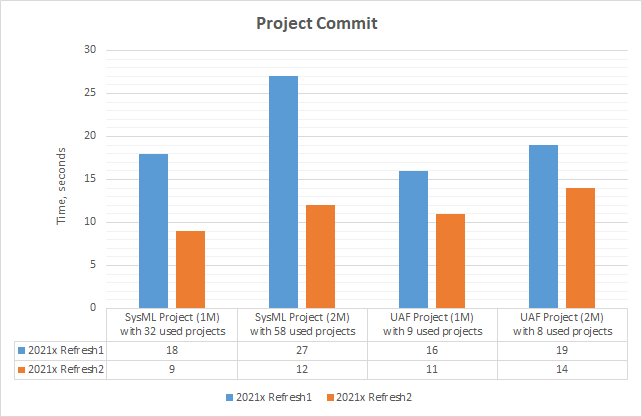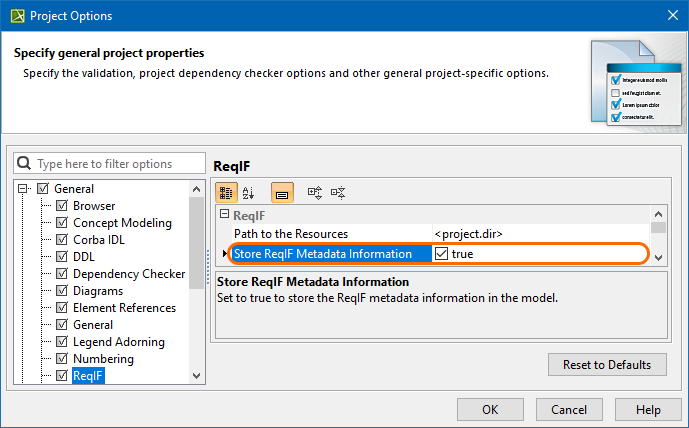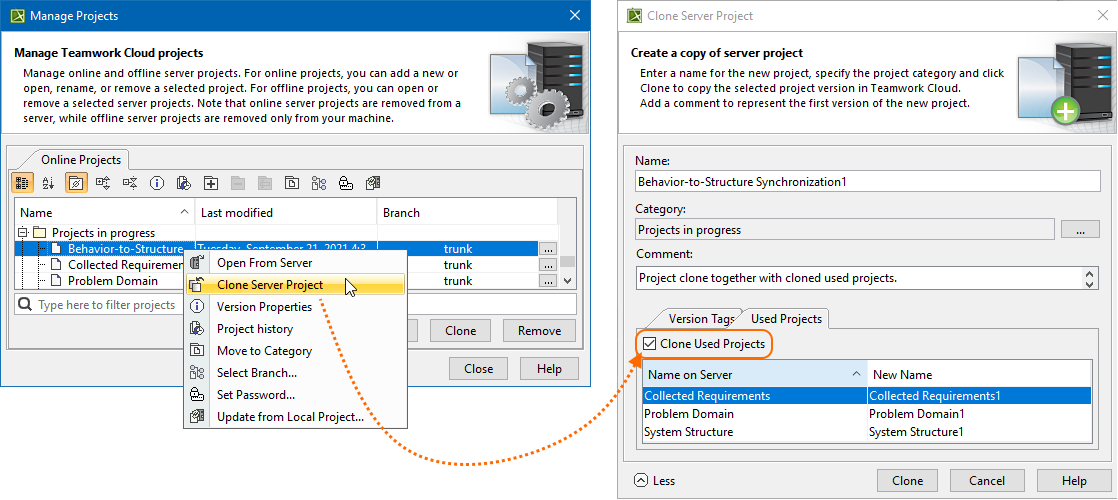Planned release: December 3, 2021
The 2021x Refresh2 introduces performance improvements to both the client-side and Teamwork Cloud-side as well as integration, general modeling, and collaborative modeling enhancements.
On the integrations side, ReqIF Import/Export improvements come into effect. For general modeling, this release presents improvements to Structured Expressions.
Finally, collaborative modeling has been extended to enable users to automatically clone used projects together with the main project.
To download the latest MagicDraw version, see Downloading installation files. Don't forget to give us your feedback on LinkedIn, Twitter, or Facebook.
2021x Refresh2 HotFix 5 available
Due to Cassandra 3.11 approaching its end of life, the 2021x Refresh2 HotFix 5 has been released on April 21, 2023. This HotFix addresses the issue by supporting Cassandra 4 and introduces a number of bug fixes and performance improvements.
For more information, see 2021x Refresh2 Hot Fix 5 News.
2021x Refresh2 Hot Fix 4 available
2021x Refresh2 Hot Fix 4 has been released on July 15, 2022, for CATIA Magic and No Magic portfolios. It introduces a number of bug fixes and performance improvements.
For more information, see 2021x Refresh2 Hot Fix 4 News.
2021x Refresh2 Hot Fix 2 available
Due to the Apache Log4j vulnerability issues, the 2021x Refresh2 HF2 has been released on March 4, 2022. The HF2 addresses Log4j 1.x and 2.x versions.
For more information, see CATIA Magic and No Magic products affected by Log4j vulnerability - CVE-2021-44228, CVE-2021-45046, CVE-2021-44832.
Also, see the Knowledge Base article at https://kb.dsxclient.3ds.com/mashup-ui/page/resultqai?id=QA00000102301e.
2021x Refresh2 Hot Fix 1 available
Due to the Apache Log4j vulnerability issues, the 2021x Refresh2 HF1 has been released on December 22, 2021. The HF1 addresses Log4j 2.x versions.
For more information, see CATIA Magic and No Magic products affected by Log4j vulnerability - CVE-2021-44228, CVE-2021-45046, CVE-2021-44832.
Also, see the Knowledge Base article at https://kb.dsxclient.3ds.com/mashup-ui/page/resultqai?id=QA00000102301e.
Hot Fix version compatibility
The version and Hot Fix number of a modeling tool and its plugins must be the same. After installing the Hot Fix version of a modeling tool, select the same Hot Fix version when downloading its plugins. The modeling tool will not work correctly if you install plugins of a different version and/or Hot Fix number.
Client-side Performance Improvements
Dependency Matrices. Experience enhanced in matrix building performance. From now on, large matrices are built up to 20 times faster compared to 2021x Refresh1.
A chart comparing the SysML Allocation Matrix building time in 2021x Refresh1 and 2021x Refresh2 projects.
Find. Now you can perform a search by phrase in the model 40-70 times faster compared to 2021x Refresh1. This is applicable to Find and Find and Replace dialogs as well as the Find operation used in Structured Expressions (e.g., Derived Properties, Smart Packages, Tables, Matrices, etc.)
A chart comparing the search by phrase time in 2021x Refresh1 and 2021x Refresh2 projects.
- Element selection dialog. Further performance improvements have been introduced to element selection (i.e., the Select Element dialog and drop-down lists). The element search can now be performed instantly when using Filter By Package Imports for context-specific type selection.
Teamwork Cloud-related Performance Improvements
Performance Improvements Under Slow Network
Performance improvements have been implemented to optimize working with Teamwork Cloud projects containing a set of used projects in slow network environments (ping time >115 ms).
A chart comparing the Project Load, Project Commit, and Project Update operations speed in slow network environments.
Modeling and Infrastructure
Structured Expressions Improvements
Long-awaited improvements have landed! Working with Structured Expressions is now more convenient and less confusing.
- The Comparison operations, such as Equals, GreaterThan, and LessThan, can consume a set containing a single element, for instance, as returned by Metachain Navigation and Simple Navigation operations
- In cases you cannot find the needed property for the Property Test operation, you can now show the full list of properties instead of limiting it to properties applicable to the contextual element type only.
- Now all template operations (Simple Navigation, Metachain Navigation, Find, and Implied Relation) are represented in italic to clearly indicate that they are not specified. As a result, constant double-checks and manual removals of empty operations are no longer needed.
You can now apply changes to the Parameter name without the fear of breaking its usages within the Structured Expression specified in the Opaque Behavior body.
Stay tuned, more enhancements are coming in future versions!
Learn more about Structured Expressions>>
Other Improvements
From now on, suspect links in used projects are ignored when performing the suspect links analysis, meaning that the scope of the analysis is narrowed down to only relevant elements.
The Notification Window is no longer opened automatically when opening projects and switching between or creating new projects since the Notification Window status (open/closed) is now respected for each project individually.
Collaboration
Cloning Used Projects
Project cloning has been upgraded! For more effective working with Teamwork Cloud projects, you can now clone used projects together with the main project automatically by simply selecting a checkbox.
Cloning used projects together with the main project.
Other Teamwork Cloud-related Improvements
- For security reasons, you can now add an argument to the properties file of the modeling tool to hide logging in to Teamwork Cloud with the username/password.
- From now on, you can access the properties of the selected version much quicker since the Version Properties button has been added to the toolbar and the shortcut menu of the Content History and element History panels.
The Package permissions dialogs have been improved for usability purposes.
Report Wizard
- In this version, Report Wizard comes with an additional capability of getting derived property value by using $report.getStereotypeProperty() and $report.getStereotypePropertyString().
- With $report.isTypeOf(element, stereotypeName) for checking a super type of the specific element, you are now able to check whether an element is a subtype of the specified stereotype. Get familiarized with this report tool >>
- The new Includes other files option in the Export dialog allows you to include related files of an exported template into the same MRZIP file. Learn more about the Template Management pane >>
- You can now customize page orientation and margin in double or String values with $pageprop.setPortrait($top, $bottom, $left, $right) and $pageprop.setLanscape($top, $bottom, $left, $right) functions. You can also set page orientation to portrait or landscape with $pageprop.setPortrait() and $pageprop.setLandscape() functions for generated reports. Learn how to customize the margin and set page orientation >>
- The current Velocity Template Language has been upgraded from Version 1.6.2 to 2.2. Find out more about the velocity templating language >>

